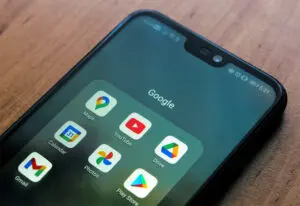Web Content with Juice | 6 Steps to Writing Better Copy
You’ve heard it both ways: Write content that’s unique, engaging and tells a story. And write copy for SEO and the search engines, using keywords and phrases that help out in search. So, how do you know which is true? Essentially both. While it is important to find and use your voice and to create content that’s engaging, persuasive and appealing, if you’re creative enough, and have had your morning coffee, you can write from you, while also writing better web copy that works.
There are no hard and fast rules, but here are a six steps that might help with writing better web copy.
1. A sexy, well written hook
The areas where you should be most concerned with are your headline – this should be catchy, create curiosity – and keyword rich. In you’re stuck on what your keywords are, you’ll need to track back to figure out who you’re talking to and how. But for now, it should be click – and search-engaging. Your titles, including your headlines, are where you summarize what the page or site is all about so the engine knows how to categorize your content.
To figure out how much traffic your content is receiving and how well you’ll be able to compete try Wordtracker, SEO Book Keyword Suggestion Tool, and of course, Google. These tools provide valuable insight into your content terrain before you tread.
2. Anchors up
Google has been talking about lessening the importance of keyword domains for some time. What they’re still juggling is when you have a keyword domain name, you subsequently have great anchor text from links pointing to your site. In many cases, it is not the domain name that is influencing ranking, it is the anchor text that results from a particular domain name. Use anchors well and never, ever resort to ‘click here’s’.
3. Know what you’re gonna say
Knowing what you’re going to say prior to sharpening your pencil, or warming up your keyboard, is a great way to plan the words and phrases you’ll be using in creating your content. Another way of going about this is of course forging full steam into your content and then backtracking to find and optimize your keywords and phrases. My strategy is the former, as it tends to be more, well, strategic, but both work just fine. Give it a try and see which best suits your content writing style.
4. Can I get a human, please?
Continue building human friendly phrases by turning keywords into keyphrases; real ones that your readers will be using to find you. Using keyword rich phrases with consistency will build relevance for your target phrases, while also helping to reduce keyword clutter, which ends up losing you points with the search engines.
5. Optimize deeper
In all of your content, it’s important to go back through and find opportunities to optimize your pages further. Asking the question: “Where can relevance be added?” is a good place to start. You can build links from keywords or keyphrases that match up with words or phrases in the title tag of the page the link is pointing. This external link should be additional content you’ve created. This can point to your blog post, Facebook page, LinkedIn event or poll, Twitter stream, or anywhere else you hang online. If you point to additional links outside of your content realm, you risk losing relevance for your keywords and phrases to the site you’re linking to. Optimizing your onsite content to your offsite content, yet still keeping your readers engaged in your brand, is a win-win strategy for optimizing your pages.
6. Both sides count
Yes, content rules, but good content is only part of the equation with writing better web copy. If your content isn’t written in a way that is readable, informative, search-friendly, and actually read and shared, there’s a good chance it won’t be found.
What are your thoughts? Anything we left out? Feel free to chime in, we love a good coffee discussion.
Christina Brown –
Savy, integrated marketing
Recent Posts
How to Rebrand Your Instagram for Better Engagement and Brand Recognition
Your Instagram presence can act as a beacon for brand recognition and customer engagement. It’s about painting a picture so compelling that your audience cannot help but be drawn to […]
Read MoreFrom Clicks to Conversions: The Science of High-Performing Digital Ads
The journey from interest to purchase is often paved with digital advertisements. However, not all digital ads are crafted equally. While some fade into the background, others command attention and […]
Read MoreBrand Consistency Examples That Will Make You Rethink Your Marketing Strategy
A consistent and strategic brand identity across all platforms is not just beneficial; it’s essential. By exploring real-world brand consistency examples, we uncover the immense power of maintaining a coherent […]
Read More3 Ways to Transform Blogs With SEO and Make Google Love Your Content
As marketers and business owners, our goal is to ensure the blogs we publish confidently stride into the spotlight of Google’s top search results. Achieving this requires great content, but […]
Read More



